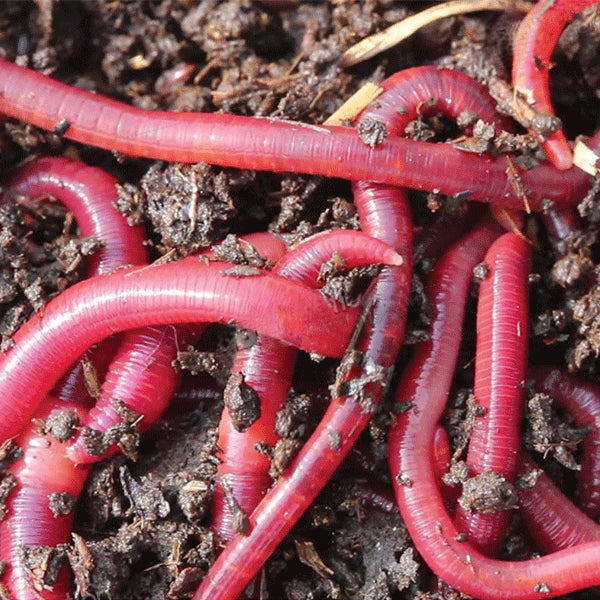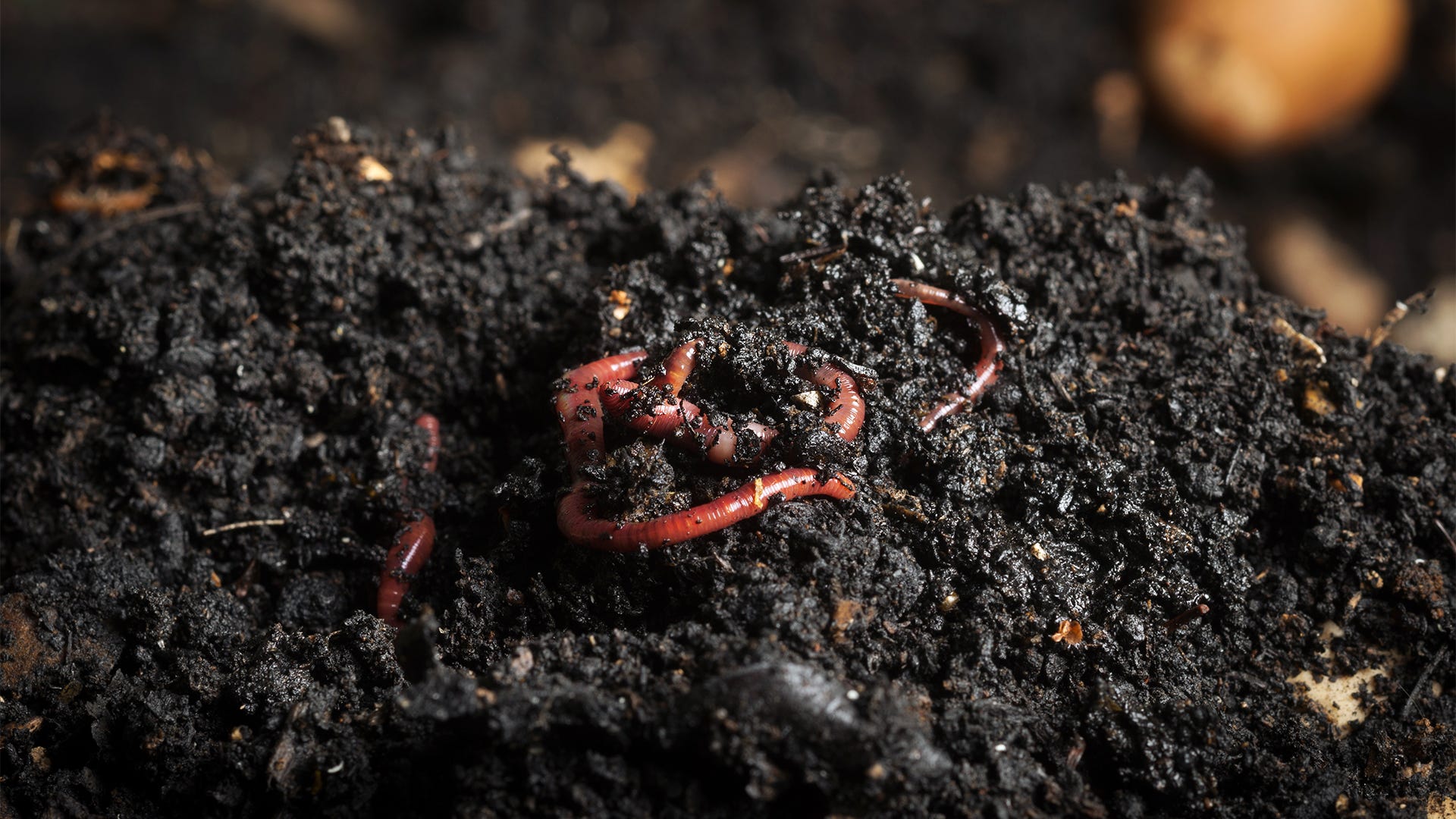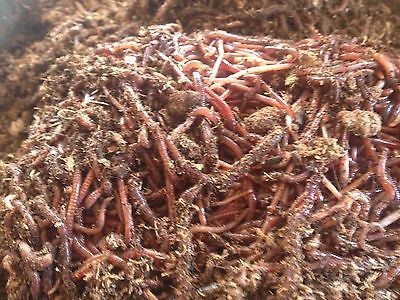Affordable red worms: Tips for raising them
Affordable red worms: Tips for raising them
Blog Article
The Duty of Red Wigglers in Sustainable Gardening
The integration of red wigglers into sustainable horticulture methods uses an engaging strategy to enhancing soil health and minimizing natural waste. The implications of utilizing red wigglers prolong past simple composting; their function in forming a much more lasting future warrants a much deeper expedition of their advantages and sensible applications.
Comprehending Red Wigglers
Red wigglers, medically called Eisenia fetida, are a species of earthworm renowned for their function in lasting gardening and composting methods - red wigglers. These worms grow in breaking down organic matter, making them particularly effective in transforming kitchen scraps and yard waste into nutrient-rich garden compost. Unlike traditional earthworms, red wigglers have a higher tolerance for differing moisture degrees and can flourish in environments with abundant natural material
(Worm Farms Near Me)Characteristically, red wigglers are smaller than their earthworm counterparts, typically measuring in between 3 to 4 inches in length. They have a reddish-brown pigmentation and have a segmented body framework that assists in their burrowing and feeding activities. These microorganisms are hermaphroditic, implying each individual possesses both male and women reproductive organs, which enables reliable populace development under optimum problems.
The habitat preferences of red wigglers consist of wet, dark settings rich in natural material, such as garden compost containers or worm ranches. Their ecological duty expands past composting; they are integral in aerating the dirt and promoting vitamins and mineral biking, which eventually adds to healthier yard environments. red wigglers. Understanding the biology and actions of red wigglers is crucial for those seeking to carry out effective vermicomposting in sustainable gardening
Benefits of Vermicomposting
Vermicomposting deals countless benefits that boost sustainable gardening practices and add to environmental wellness. One of the main benefits is the makeover of natural waste into nutrient-rich garden compost, which boosts dirt structure and fertility. The castings created by red wigglers are loaded with helpful bacteria and necessary nutrients, making them an outstanding all-natural fertilizer.
Additionally, vermicomposting substantially lowers land fill waste. By drawing away kitchen area scraps and lawn waste from land fills, this technique not just reduces methane discharges-- a potent greenhouse gas-- however likewise promotes a round economic situation, where waste is repurposed as a resource.
An additional benefit is the improvement of soil aeration and drainage (red wigglers). The burrowing task of red wigglers creates networks in the soil, permitting air and water to penetrate more easily, thus cultivating a healthier origin system for plants
Additionally, vermicomposting can be done on a tiny scale, making it available for city gardeners and those with minimal area. This approach urges ecological stewardship and awareness, as individuals come to be a lot more engaged with their waste management practices. Eventually, vermicomposting stands for a sustainable, effective, and eco-friendly technique to horticulture that benefits both plants and the earth.
Exactly How to Beginning Vermicomposting
Starting your own vermicomposting system can be a rewarding venture that improves your lasting gardening practices. To begin, select an ideal container, such as a plastic bin or wooden box, with great drainage and air flow. The size will certainly rely on the volume of kitchen area scraps you create; a container of 10-14 gallons usually is sufficient for a home.
Following, prepare the bed linens material. Shredded newspaper, cardboard, and coconut coir are superb choices, offering a comfy environment for the red wigglers. Go for a bed linens visit this website depth of concerning 4-6 inches, which should be wet however not soaked.
As soon as the bed linens is developed, introduce your worms. Red wigglers (Eisenia fetida) are the most appropriate for composting. Begin with about one extra pound of worms for every single 2-3 extra pounds of kitchen scraps weekly.
Begin adding kitchen area waste, preventing meat, dairy products, and oily foods, as these can bring in insects and develop smells. Frequently keep an eye on the container's wetness degrees and temperature level, ensuring it remains within the suitable variety for worm task. With these first steps, you'll be well on your way to creating nutrient-rich compost for your garden.
Maintaining a Healthy Worm Bin
A thriving worm bin needs regular care and interest to maintain an optimal atmosphere for the red wigglers. Key elements to keep an eye on include moisture degrees, temperature, and food supply. Maintaining a moisture level similar to a wrung-out sponge is critical; too much water can cause anaerobic problems, while insufficient can dehydrate the worms.
Temperature is also critical, as red wigglers flourish in a series of 55 to 77 levels Fahrenheit. Extreme temperatures can stress the worms, potentially resulting in mortality. Therefore, positioning the bin in a climate-controlled location or making use of protecting products can aid regulate temperature level fluctuations.

Last but not least, oygenation is vital. On a regular basis transforming the bed linen and making use of a fork or shovel can prevent compaction and advertise air movement, making sure a healthy and balanced, thriving setting for the red wigglers. By adhering to these methods, gardeners can maintain an efficient worm bin that sustains lasting horticulture efforts.
Effect On Soil Health And Wellness
Enhancing soil health and wellness through making use of red wigglers is a fundamental element of lasting horticulture. These worms, understood clinically as Eisenia fetida, play an essential role in improving dirt framework and fertility. By taking in raw material, red wigglers break down complicated products into less complex compounds, a process referred to as vermicomposting. The end item, worm spreadings, is rich in crucial nutrients, including nitrogen, phosphorus, and potassium, which are important for plant growth.

(red wigglers for sale)Studies have actually revealed that soils improved with worm castings exhibit increased microbial activity and boosted fertility, causing higher plant returns. By incorporating red wigglers into horticulture techniques, garden enthusiasts not just improve their soil however likewise add to a much more sustainable farming system, stressing the interconnectedness of soil health and ecological stewardship.

Verdict
In conclusion, red wigglers substantially contribute to sustainable gardening with their reliable vermicomposting practices. By promoting waste reduction and fostering a round economic climate, red wigglers arise as necessary elements in environmentally friendly horticulture efforts, emphasizing their crucial duty in environmental sustainability.
Report this page